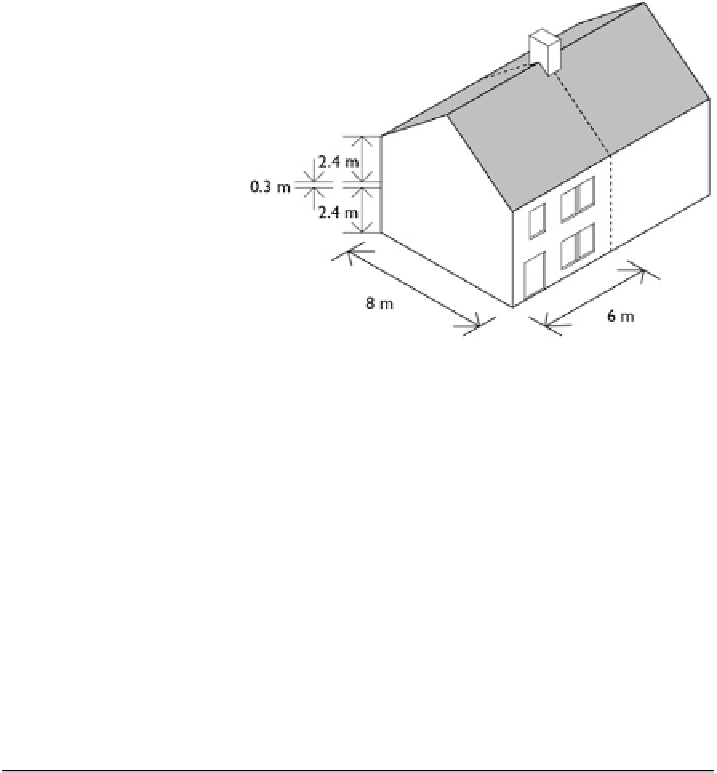Civil Engineering Reference
In-Depth Information
Fig. 4 Case study semi-
detached dwelling
characteristics
Table 2
Main characteristics of existing building and refurbishment options considered in the
analysis
Opaque
envelope
U-value
(W/m
2
K)
Windows U-
value
(W/m
2
K)
Solar
transmittance
MVHR
Solar thermal
(m
2
)
PV
(m
2
)
1 (existing)
0.45
3.1
0.76
No
0
0
Option 2
0.21
2.2
0.72
No
5
0
Option 3
0.14
1
0.6
No
5
0
Option 4
0.12
1
0.6
No
5
0
Option 5
0.10
1
0.6
No
5
0
Option 6
0.10
1
0.6
Yes
5
0
Option 7
0.10
1
0.6
Yes
10
0
Option 8
0.10
1
0.6
Yes
10
6
Option 9
0.10
1
0.6
Yes
10
12
Option 10
0.10
1
0.6
Yes
10
18
a specific fan power of 1.0 W/l/s have been assumed. The introduction of PV
panels is analysed from Option 9, with size increasing for subsequent options.
The solar thermal collectors chosen for this analysis are specified as flat-plate
collectors with an efficiency factor of 0.8 and a linear heat loss coefficient factor of
3.5. Solar PV panels are specified as multicrystalline silicon with a peak power
coefficient of 0.15 kW/m
2
, as per standard typical values from EN 15316 (CEN
2007a
,
b
).
Step 1 of methodology described for calculation of life cycle energy perfor-
mance is to calculate the energy performance in the use phase. The DEAP analysis
tool (Sustainable Energy Authority of Ireland
2007
) has been used for this purpose,
calculating the energy end uses for each of the cases considered. All results, as
displayed in Fig.
5
, are directly calculated within the DEAP methodology, except



